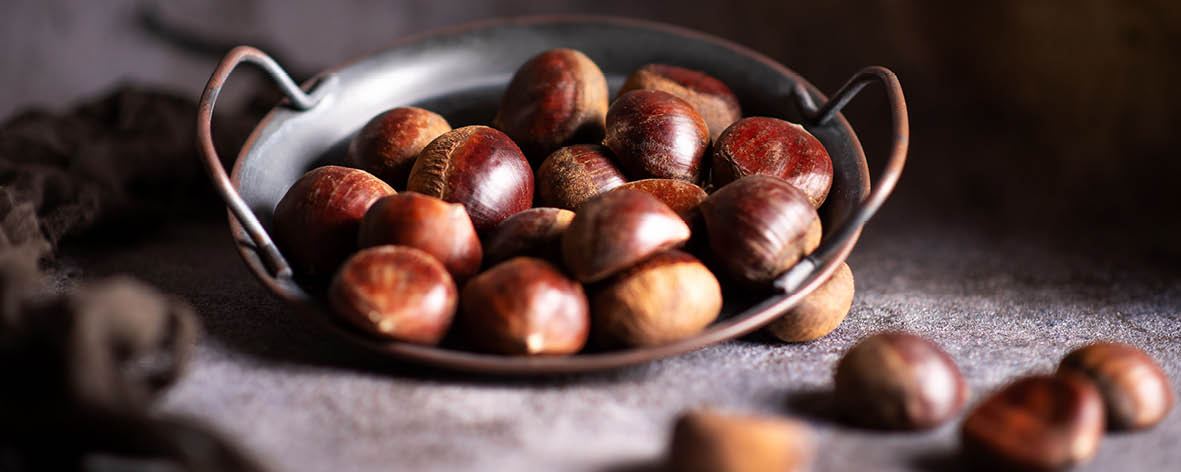That old chestnut … all you need to know about these tasty nuts

Tasmanians are getting better at embracing winter and all it brings. There’s nothing we can’t do if we’re wearing a puffer jacket. Standing around open fires and drinking mulled wine has become a ‘thing’, as have winter solstice parties. And the perfect addition to the winter vibe is roasted chestnuts. Just how do you roast them? Note: they can become exploding missiles if not prepared properly! And what are the other delicious ways to use chestnuts?
If you’ve been into a Hill Street store recently you might have seen sacks of large smooth chestnuts in amongst the display. Chestnuts are in season in late autumn and right through winter. They are grown commercially in cooler and highland areas including the Alpine Valley near Eurobin in north-east Victoria, where the industry is centred. They are also grown in Tasmania on the north-west coast.
These unassuming nuts, which look like oversized wooden garlic cloves, had humble beginnings in Europe where they are still associated with poverty, their flour used as a basic staple in poorer times before the introduction of potatoes from the New World. Today they have risen to gastronomic heights and are used in savoury and sweet dishes from soups, to pasta, to pastries.
How to roast chestnuts
The shell must be pierced to relieve the pressure that builds up when roasting – otherwise they will explode. The easiest way is by cutting a cross about 2cm long on the domed side of the nut. Make sure the incision cuts through the inner skin of the chestnut, to let the steam escape as it is heated. Put them in a pot of cold water and as it comes to the boil, remove with a slotted spoon and place in a shallow roasting pan, or cast iron pan, flat side down (cut side up) over hot coals, or in the oven at 220C. The shell will split open as they roast, which should take about 10-15 minutes. Wrap them in a clean tea towel to sit for another 10-15 minutes. Peel and eat with a scattering of sea salt. In the mountains of Auvergne in France, locals place a napkin soaked in red wine over a plate of hot roasted chestnuts and keep them warm for 30 minutes before peeling and eating these wine-infused flavour-bombs.
Other ways with chestnuts
If you don’t want to roast them, chestnuts can be boiled for 15 minutes (make sure you cut the shell as described above), peeled when still warm, chopped or pureed and used in soups, salads, pasta, pastries and desserts where their sweet, nutty flavour will shine through. Chestnuts pair well with cabbage, bacon, Brussels sprouts, mushrooms, quail, sausages, brandy, sugar, chocolate, vanilla, rum, coffee, cream, red wine and port.

